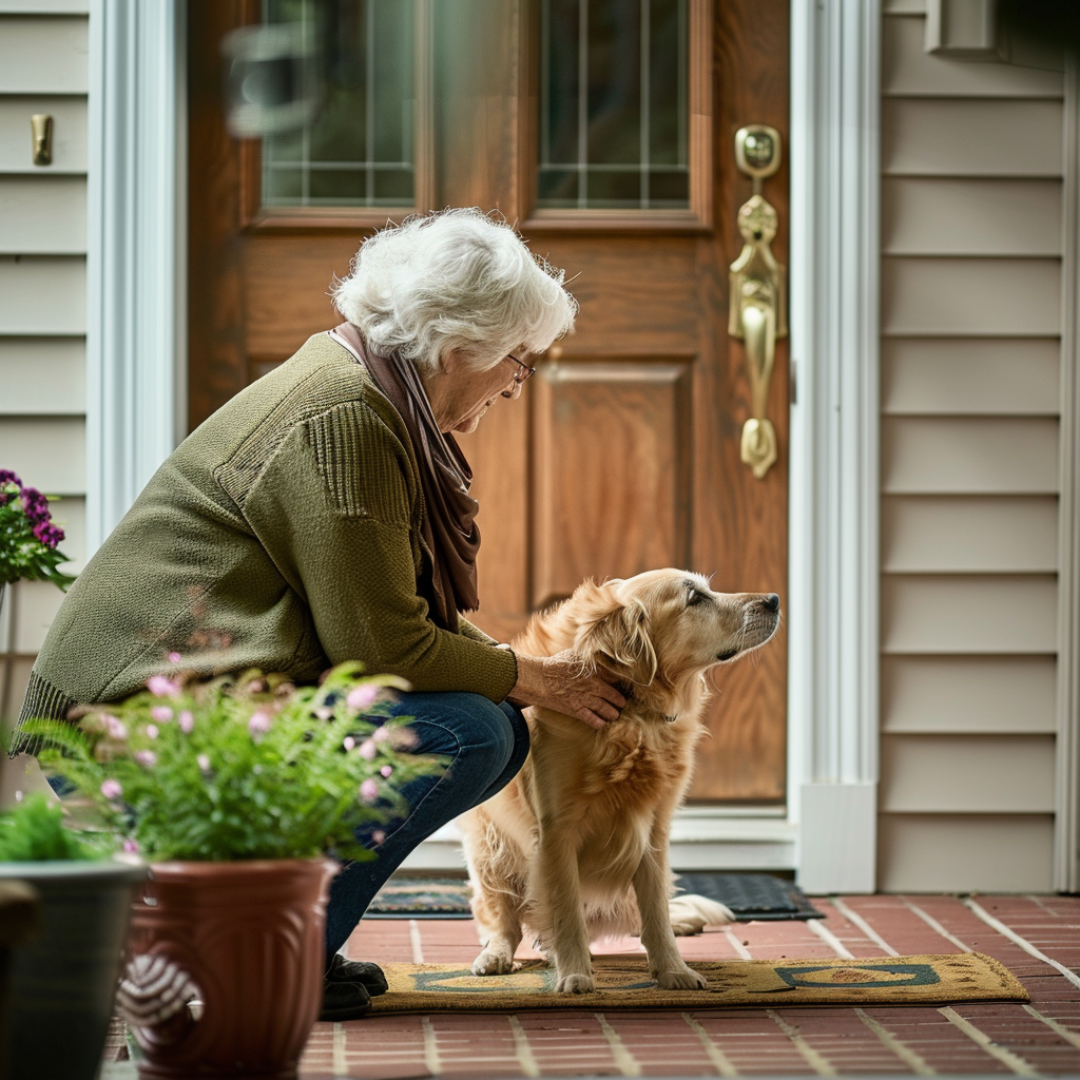Bringing a new dog into your home as a senior can be an exciting and rewarding experience, offering companionship and a sense of purpose.
However, it’s important to approach this transition thoughtfully to ensure a smooth adjustment for both you and your new furry friend.
This guide will walk you through the steps to successfully introduce a new dog to your home as a senior.
1. Preparing Your Home
Before bringing your new dog home, ensure your living space is safe and comfortable for both of you.
Remove any potentially hazardous items or valuable objects that could be damaged.
Create a designated area for your dog with a bed, water bowl, and toys.
Consider installing baby gates to limit access to certain areas of your home if needed.
Ensure all cleaning supplies and medications are stored safely out of reach.
Check that your fencing is secure if you have a yard.
Prepare a quiet space where your dog can retreat if they feel overwhelmed.
2. Choosing the Right Dog
Select a dog whose energy level and size match your lifestyle and physical capabilities.
Consider adopting an older dog, as they often have calmer temperaments and established personalities.
Research different breeds to find one that suits your living situation and care abilities.
Consult with shelter staff or breeders about a dog’s temperament and specific needs.
If possible, spend time with the dog before adoption to ensure a good fit.
Consider any allergies or physical limitations you may have when choosing a dog.
Don’t hesitate to ask for help from family or friends in the selection process.
3. The First Day Home
Plan to bring your new dog home on a day when you can devote your full attention to them.
Keep the atmosphere calm and quiet to help your dog feel at ease.
Allow your dog to explore their new environment at their own pace.
Show them where their bed, water, and food are located.
Take your dog out for bathroom breaks frequently and establish a routine.
Offer praise and treats for good behavior to start building a positive relationship.
Be patient and understanding, as your new companion may be nervous or unsure.
4. Establishing Routines
Create a consistent daily schedule for feeding, walks, and playtime.
Start training basic commands using positive reinforcement techniques.
Gradually introduce your dog to different areas of your home and yard.
Establish rules and boundaries from the beginning to prevent confusion.
Be consistent with your expectations and commands.
Consider enrolling in a senior-friendly dog training class for additional support.
Remember that it may take time for both of you to adjust to the new routine.
5. Meeting New People and Pets
Introduce your dog to family members and friends gradually and in a controlled manner.
If you have other pets, supervise their interactions closely and introduce them slowly.
Allow your dog to approach new people at their own pace.
Teach visitors how to properly greet your dog to ensure positive experiences.
Consider having a professional trainer assist with introductions if you’re unsure.
Watch for signs of stress or discomfort in your dog during new encounters.
Reward calm and friendly behavior to encourage positive social interactions.
6. Health and Safety Considerations
Schedule a check-up with a veterinarian soon after bringing your dog home.
Ensure your dog is up-to-date on vaccinations and preventative treatments.
Consider microchipping your dog for added security.
Learn about common health issues for your dog’s breed or age group.
Create a plan for exercise that suits both your and your dog’s physical abilities.
Familiarize yourself with emergency veterinary services in your area.
Consider pet insurance to help manage potential healthcare costs.
Conclusion
Introducing a new dog to your home as a senior requires preparation, patience, and understanding.
By carefully selecting the right dog, preparing your home, establishing routines, and prioritizing health and safety, you can create a strong foundation for a loving and rewarding relationship.
Remember that the adjustment period varies for each dog, so give yourself and your new companion time to settle into your new life together.
Share this article on Facebook to help other seniors who are considering bringing a new dog into their homes!
Your friends and family might find these tips helpful in ensuring a smooth transition for both seniors and their new canine companions.
SHARE now with your friends!
- Hero Farm Dog Survives Epic Battle with Coyote Pack - December 9, 2024
- The 10-Minute Bedtime Routine That Changed My Dog’s Sleep Forever - November 29, 2024
- Creating a Safe Space for Nervous Pets: Your Guide to Pet-Friendly Havens - November 25, 2024

